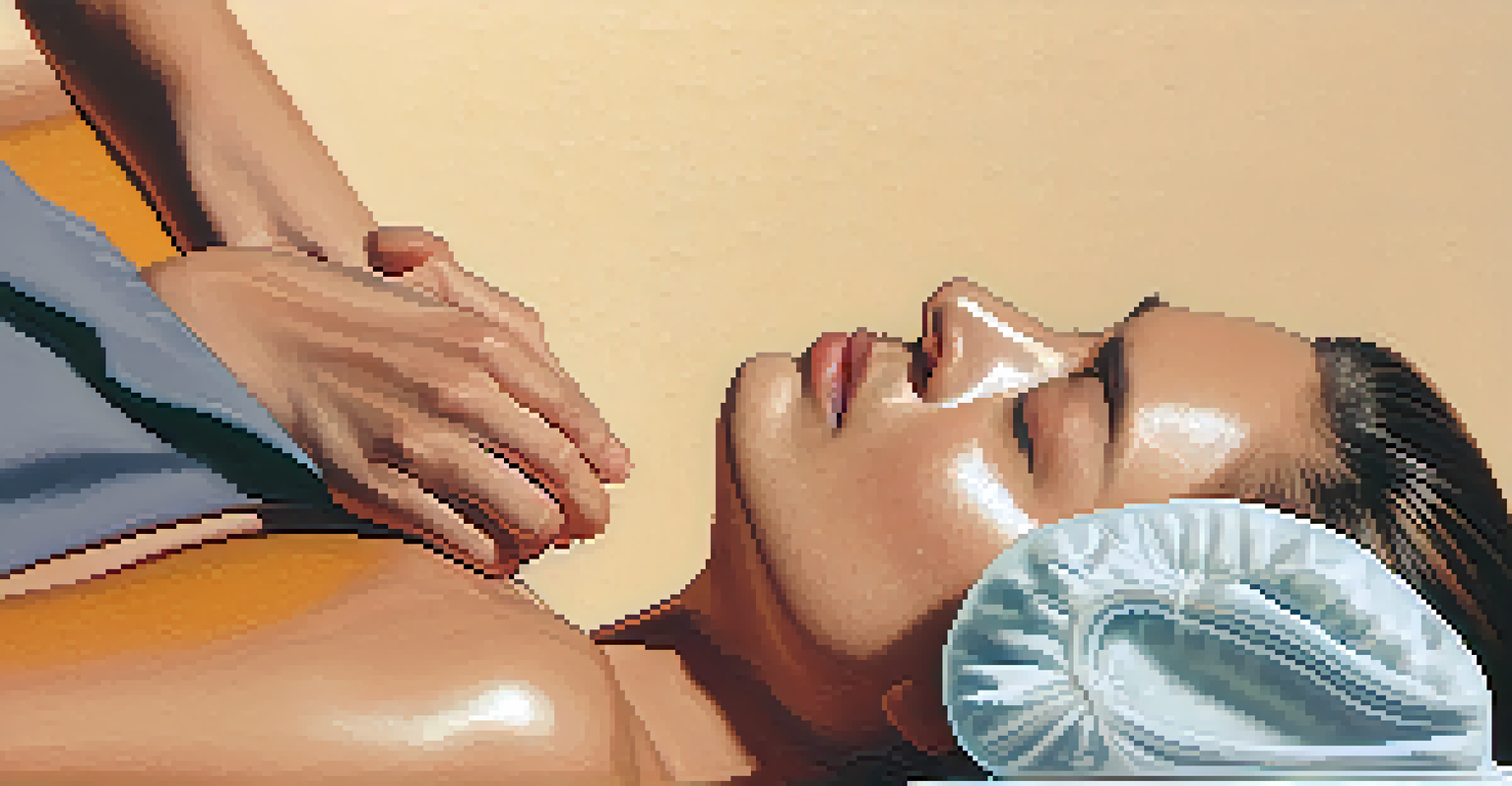Using Heat and Cold Therapy for Effective Pain Relief

Understanding Heat Therapy: Soothing Your Aches
Heat therapy involves applying warmth to your body to ease pain and stiffness. It works by increasing blood flow, which promotes healing in sore muscles and joints. This method is particularly effective for chronic pain conditions, like arthritis or muscle tension.
The natural healing force within each of us is the greatest force in getting well.
You can use various heat sources, such as heating pads, warm towels, or even a warm bath. Just imagine soaking in a hot tub after a long day; the heat envelops you, melting away stress and discomfort. That’s the essence of heat therapy.
Always remember to apply heat for about 15-20 minutes at a time, and make sure the source isn’t too hot to avoid burns. It's all about finding that sweet spot where comfort meets relief!
Cold Therapy: Numbing Pain and Reducing Inflammation
Cold therapy, or cryotherapy, is the practice of applying cold to reduce pain and swelling. This technique is especially useful for acute injuries, such as sprains or strains, as it numbs the affected area and slows down blood flow, reducing inflammation.

Think of how refreshing it feels to place an ice pack on a sore muscle after a workout. That immediate cooling sensation can be incredibly soothing and helps in managing pain effectively. Cold therapy is often a go-to for athletes recovering from injuries.
Heat Therapy Eases Chronic Pain
Applying warmth increases blood flow, promoting healing in chronic pain conditions like arthritis.
To utilize cold therapy, wrap ice in a cloth or use a cold pack for 10-15 minutes. Just be sure to give your skin breaks to prevent frostbite; it's all about finding that balance between relief and safety.
When to Use Heat vs. Cold: Timing is Key
Knowing when to use heat or cold is crucial for effective pain management. Generally, heat is best for chronic pain or stiffness, while cold works wonders for recent injuries. Timing can make a significant difference in how quickly you find relief.
Pain is inevitable. Suffering is optional.
For example, if you’ve just twisted your ankle, applying cold therapy right away can help minimize swelling and numb the pain. Conversely, if you’re dealing with ongoing back pain, a heating pad might be your best friend to relax tense muscles.
Always listen to your body. If one method doesn’t provide relief, it might be worth trying the other. Understanding your pain and its origin can guide your decision on which therapy to use.
Combining Heat and Cold: A Powerful Duo
Sometimes, the best solution is a combination of both heat and cold therapy. Alternating between the two can enhance blood flow while also reducing swelling, creating a balanced approach to pain relief. This method can be especially beneficial for injuries that have lingering effects.
Imagine starting with cold therapy to reduce inflammation, followed by heat to relax and soothe the muscles. This dual approach can provide a comprehensive strategy for tackling pain head-on, making it a favorite among physical therapists.
Cold Therapy Reduces Inflammation
Using cold slows blood flow and numbs pain, making it ideal for acute injuries like sprains.
However, be mindful of the time spent on each method. A good rule of thumb is to start with 10-15 minutes of cold therapy, followed by a similar duration of heat. This way, you can maximize the benefits without overdoing it.
Precautions to Take with Heat and Cold Therapy
While heat and cold therapy can be incredibly effective, it’s essential to approach them with caution. Always consult a healthcare professional if you’re unsure about the best method for your specific condition. They can provide personalized advice tailored to your needs.
For heat therapy, avoid using it on swollen areas or broken skin. For cold therapy, never apply ice directly to the skin; always use a barrier like a cloth. Taking these precautions can help prevent any adverse effects and ensure a safe experience.
Listening to your body is key. If you notice increased pain or discomfort, discontinue use and seek advice. Pain relief should enhance your well-being, not complicate it.
Lifestyle Tips to Complement Therapy Techniques
Incorporating healthy lifestyle habits can amplify the benefits of heat and cold therapy. Regular exercise, proper hydration, and a balanced diet can significantly impact your body’s ability to recover and manage pain. Think of it as building a supportive community around your pain management.
For instance, gentle stretching or yoga can improve flexibility and reduce tension, making the effects of heat therapy more pronounced. Meanwhile, staying hydrated helps your body flush out toxins, enhancing overall recovery.
Combining Heat and Cold is Effective
Alternating between heat and cold enhances relief by improving blood flow and reducing swelling.
Additionally, consider mindfulness practices like meditation or deep breathing exercises. These can help lower stress levels, which often contribute to pain, creating a holistic approach to your well-being.
Consulting Professionals: When to Seek Help
While heat and cold therapy can be incredibly effective for managing pain, sometimes professional intervention is necessary. If you find that your pain persists despite these methods, it may be time to consult a healthcare professional. They can help identify underlying issues that may require more specialized treatment.
Physical therapists, chiropractors, or pain specialists can provide tailored advice and treatment plans based on your specific needs. They can help you understand the best uses of heat and cold therapy in conjunction with other treatments.

Ultimately, seeking professional guidance can empower you to take control of your pain management journey. Remember, you don’t have to navigate this path alone; support is available to guide you.